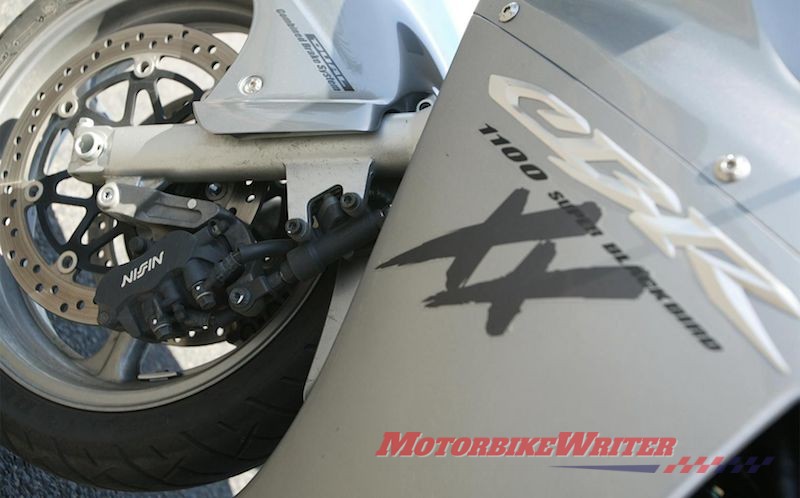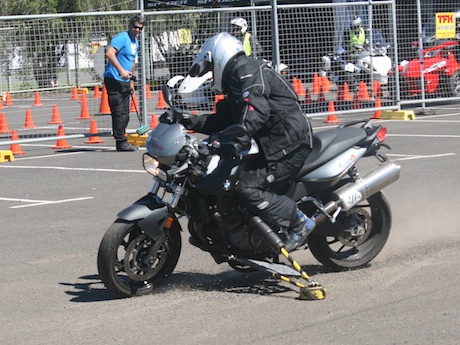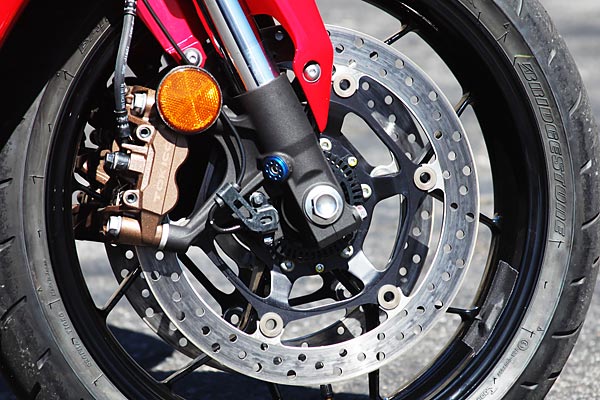From November 2019, all new motorcycle models sold in Australia will either have anti-lock braking systems (ABS) or combined braking systems (CBS).
Federal Minister for Urban Infrastructure Paul Fletcher has approved the Australian Design Rule changes which will also affect all models, including existing models, from 2021.
He says the requirements will ensure “all” new motorcycles sold in Australia feature “the same life-saving braking technologies currently required in Europe, Japan and a number of other major markets around the world”.
ABS exemptions
However, there are some exceptions and exemptions to the new ADR.
ABS will be mandatory on motorcycles, trikes and scooters over 125cc, while either ABS or CBS will be mandatory on those under 125cc.
If the bike has switchable ABS, the default setting when the bike is turned off and turned back on again will be for ABS to be active.
Enduro and trials bikes are exempt from mandatory ABS.
Federal Chamber of Automotive Industries national motorcycle manager Rhys Griffiths says they also negotiated an exemption for trail bikes below 250cc.
However, the FCAI was not able to gain an exemption for larger trail bikes such as the Kawasaki KLR650 and Suzuki DR650. (A trail bike is defined as having a 21″ front wheel and solo seat.)
Rhys says he does not expect the legislation to pass in the next sitting week of parliament, but it could pass early next year.
Combined Braking Systems

Combined Braking Systems or linked brakes have been around for some time, mainly on Honda and BMW sports tourers and some race bikes.
It is where both brakes work when you depress either the front brake lever or the rear brake pedal.
Usually, the pressure applied to the brakes is proportional.
That is, if you hit the front brake, only a proportion of the rear brake is applied and vice versa.
Braking tech ‘saves lives’
The Minister says ABS and CBS can reduce motorcycle related road trauma in Australia by more than 30%.
“With motorcycles currently the fastest growing vehicle type, widespread fitment of this safety technology will make a real impact on reducing fatalities on Australia’s roads each year by ensuring that the safest motorcycles are made available to Australians at the lowest cost.”
However, Motorcycle Council of NSW treasurer Steve Pearce disputes those figures.
“Do you think ABS will save 40 lives per year?” he asks.
“The statistic of 30% is a vehicle-based figure. How many motorcycle crashes involve front-end loss of braking?
“ABS in a motorcycle is great but will we see this impact? And what about dirt bikes? A dirt bike will need the ability to switch between modes.”
He says the additional cost of fitting ABS should be optional for riders.
The introduction of advanced braking systems for motorcycles was agreed to under action item 16c of the National Road Safety Strategy 2011-2020, and action item 7 of the National Road Safety Action Plan 2015-17.
As of 2017, about 40% of all motorcycles sold in Australia are already equipped with ABS and manufacturers such as BMW and Harley-Davidson only sell motorcycles equipped with ABS.
CBS is offered on only a few motorcycles and scooters.
There is no requirement for existing bikes to be retro-fitted with ABS or CBS. There are no aftermarket products available, anyhow.
ABS training

Steve says riders should be trained in the use of ABS.
“No one has mentioned training for riders on how to get the best from the technology,” he says.
“This is a great initiative but we need more feedback and involvement from riders to get the best impact.
“Riders need to be taught in a controlled environment by trainers who can demonstrate how ABS works on a motorcycle and how to use ABS to its best advantage in an emergency.
“Depending on the road surface, the ABS, suspension setup and weight of the rider interact to stop the motorcycle, so riders need to practise on real road surfaces on the motorcycle that they own.
“We also have the situation where ABS does not perform well on dirt roads, so we also advocate the ability to switch off ABS on bikes that are likely to be used on dirt roads.”



